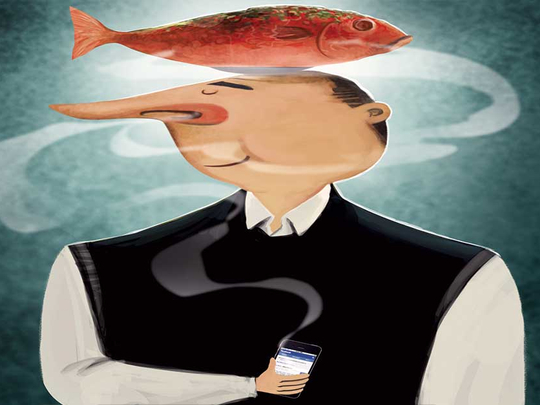
No one really knows what effect fake news and WikiLeaks had in undercutting Democrat candidate Hillary Clinton’s chances in the United States presidential elections last month. In addition to claims that Russian hackers had interfered in the election process in order to help Republican candidate Donald Trump win, there is actually no precedent to the bizarre circumstances that had surrounded the recent American election. What we know is that fake news, which is the deliberate dissemination of fallacious information as facts, is here to stay and that people, through social media outlets, have become willing enablers of what Clinton had described as “an epidemic” with real world consequences, while Pope Francis called peddlers of fake news sick.
Spreading fake information has always been used by warring states as a strategic weapon. Propaganda departments during the Second World War and the Cold War used every means possible to stir public opinion in the opposing camp and confuse the enemy. Also the use of media as a tool to attack and disqualify political opponents is not new. Politicians have manipulated various forms of mass communication platforms for centuries.
In many cases they would make accusations and present statements as facts. It was the job of responsible journalists to fact-check such statements and alert audiences to cases of hyperbole, sophistry and mere lies. That was when media generally meant radio, TV and print; podiums that embraced clear ideological stands and adhered to a minimum code of journalistic ethics that cherished the truth and attempted to be fair and balanced in their coverage.
Even sensational press, which did not hide its bias and resorted to exaggerations, invasion of privacy, sarcasm, vitriol and personal attacks, avoided spreading fake news and rumours as opposed to flawed and skewed news. The credibility of any mass medium demanded it.
Until the birth of the internet and the subsequent appearance of public bulletin boards, chat rooms, blogs — the precursors to today’s social media outlets — people had no recourse to share opinions on public issues except through traditional media such as radio, TV and print journalism. Publishers and editors had the power to delete and edit such opinions to accommodate their editorial policy and social decorum.
The internet changed all that. It empowered individual users and allowed them to post reactions, thoughts, comments and yes, even news. And in general the internet space was censorship free, where fringe political and social movements and individuals could publish radical views which otherwise would not be allowed or tolerated in mainstream media. The internet provided a megaphone to such groups and their message could now be accessed by or sent to millions of people all over the globe. Physical boundaries had been obliterated and traditional media had been sidelined. Journalists, as trusted middlemen, had become irrelevant. Internet users could now become newsmakers as well as news disseminators and the concept of citizen journalism was born. Technology allowed users to break through firewalls and access information that governments did not want them to see. It also created the modern-day hacker. This triggered what we now call cyberwarfare and created whistle-blowers in the form of Edward Snowden and Julian Assange.
Repeating story as fact
The US elections saw a surge in all of these: Fake news, computer hacking, leaking of emails and the gradual sidelining of mainstream media. Fake news disseminators had the global platform to reach millions and influence them. Just like the old but contentious cliche, ‘If it’s printed, it must be true’, today there is a gullible acceptance by many of the saying: ‘If it’s on the internet, it must be true’. Trump, intentionally or otherwise, repeated false statements, which when pointed out that they were untrue, replied that he had read them on the internet! And even trusted mainstream media, such as MSNBC, fell for an internet fake news claim and repeated the story as fact.
Fake news would not become a centrepiece of today’s debate on media and its future if it wasn’t for social media and people’s trust in them. A recent study found that 40 per cent of American adults rely on social media, particularly Facebook, as the only source of news. That figure will go higher in the coming years. And people trust what their friends share on Facebook and Twitter and in many cases they will share it again on their page for other friends to see. Online memes have become a behavioural epidemic; a non-cerebral, culturally-viral phenomenon that allows any idea, in any form, to spread, through social media, in a short period of time. In many cases, unfortunately, they are considered as facts because people trust the source — a friend or a relative.
Even as Google, Facebook and Twitter grapple with the concept of fact-checking what is being published, in order to contain the spread of fake news, the reality is that a Pandora’s Box has been opened and no one really knows what the next step in the evolution of online public platforms will look like or who, if anyone, will be able to control it.
Osama Al Sharif is a journalist and political commentator based in Amman.










